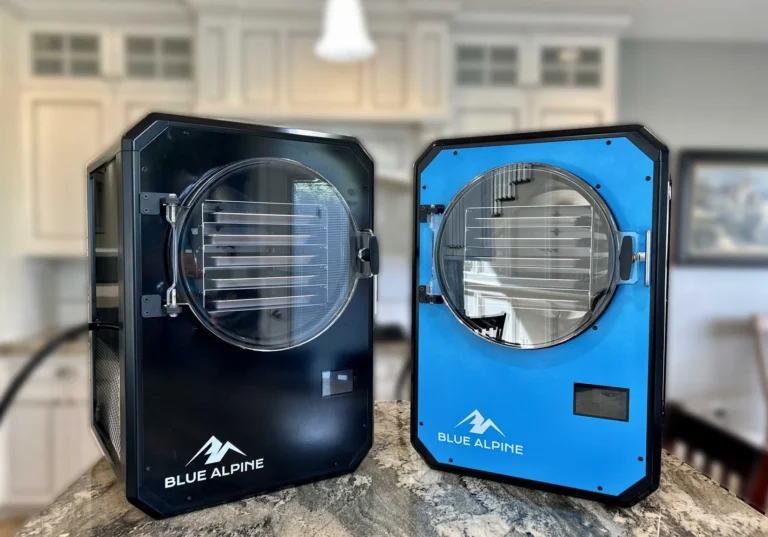Cracking the Code: How to Access Wi-Fi Networks with a Free WPS PIN List
Welcome to the wild world of Wi-Fi hacking! Okay, maybe “hacking” is a bit too dramatic. How about we call it Cracking the Code. After all, today we’re going to explore how to access Wi-Fi networks using a free WPS PIN list.
Now, before you start picturing yourself as some sort of digital James Bond, let’s clarify what exactly a WPS PIN is and how it can help you connect to wireless networks effortlessly. Whether you’re looking for an easy way to hop onto your neighbor’s network or just trying to troubleshoot your own connection issues, this guide will give you the lowdown on everything WPS-related.
Outline for Cracking the Code: How to Access Wi-Fi Networks with a Free WPS PIN List”:
Understanding how to access Wi-Fi networks with a free WPS PIN list starts with getting familiar with the concept of WPS PIN. We’ll delve into what exactly a WPS PIN is and how you can find it on your router.
Next, we’ll explore the idea of using a free WPS PIN list and address any legal concerns that may arise. Additionally, we’ll discuss alternative methods for accessing Wi-Fi networks legally while ensuring your actions remain above board. It’s important to take precautions to ensure legality when utilizing a WPS PIN list, so we’ll cover some key points in that regard as well. Stay tuned for more insider knowledge!
Understanding WPS PIN
What is a WPS PIN, you ask? Well, let’s break it down for you. WPS stands for Wi-Fi Protected Setup, and the PIN (Personal Identification Number) is a unique eight-digit code that helps authenticate devices when connecting to a wireless network.
Finding the WPS PIN on your router might seem like a mystery at first, but fear not! It’s usually printed on a sticker located on the bottom or back of your router. This handy little code allows you to easily connect devices without having to remember long and complicated passwords. So now that you have an understanding of what a WPS PIN is and how to find it, let’s dive into using a free WPS PIN list!
What is a WPS PIN?
A WPS PIN, short for Wi-Fi Protected Setup Personal Identification Number, is a unique eight-digit code that provides a secure method for connecting devices to a wireless network. This PIN acts as a password and allows devices such as smartphones, tablets, or laptops to establish a connection without the need to manually enter the network’s SSID (Service Set Identifier) or password.
To find the WPS PIN on your router, you can refer to the router’s user manual or check its settings through the administration panel. It’s important to note that each router has its own default WPS PIN set by the manufacturer, but this can usually be customized by users for added security. Understanding how this PIN works is crucial in accessing Wi-Fi networks using free WPS PIN lists effectively and legally
How do I find the WPS PIN on my router?
Finding the WPS PIN on your router is a crucial step in accessing Wi-Fi networks. Luckily, it’s not as complicated as it sounds! To locate the WPS PIN, you can start by checking the bottom or back of your router. Many routers have a label that displays important information, including the WPS PIN. If you don’t see it there, try accessing your router settings through a web browser. Once logged in, navigate to the wireless settings section and look for an option called “WPS” or “Wi-Fi Protected Setup.” In this section, you should find the WPS PIN listed alongside other details about your network.
Remember that each router model may have different instructions for finding the WPS PIN. So if you’re still having trouble locating it after exploring these options, consult your router’s user manual or visit the manufacturer’s website for specific guidance tailored to your device. With some patience and persistence, finding the WPS PIN on your router will become second nature!
Using a Free WPS PIN List
What is a WPS PIN list, you may ask? Well, it’s a compilation of numeric codes that can potentially grant you access to Wi-Fi networks. Sounds tempting, right? But before we dive in, let’s address the elephant in the room: Is using a free WPS PIN list legal?
While it might be tempting to take advantage of such lists, it’s important to note that using them without permission is illegal and unethical. It’s always best to respect the privacy and security measures put in place by network owners. However, if you still want access to Wi-Fi networks without resorting to shady tactics, there are legal alternatives available. Let’s explore those options next!
What is a WPS PIN list?
A WPS PIN list is essentially a compilation of numerical codes that can be used to access Wi-Fi networks via the Wi-Fi Protected Setup (WPS) feature. These lists are often created by individuals or groups who have discovered vulnerabilities in routers’ WPS systems, allowing them to generate valid PINs for unauthorized access.
Using a WPS PIN list involves inputting these generated codes into the router’s settings to bypass any security measures and gain entry to the network. It’s important to note, however, that using a WPS PIN list for unauthorized access is illegal and unethical. While it may seem tempting to use these lists as a shortcut, there are legal alternatives available for connecting devices to Wi-Fi networks without resorting to such methods.
Is using a WPS PIN list legal?
Using a WPS PIN list to access Wi-Fi networks is a topic that raises questions about its legality. While it may seem tempting to use these lists as a shortcut, it’s important to understand the legal implications involved.
First and foremost, it’s essential to note that using someone else’s Wi-Fi network without their permission is considered unauthorized access and can be considered illegal in many jurisdictions. Accessing a network without proper authorization violates privacy laws and can result in serious consequences. Therefore, before resorting to using a WPS PIN list, it is crucial to consider the legalities involved and make an informed decision.
Additionally, some countries have specific legislation or regulations regarding the use of WPS PIN lists. These laws aim at protecting individuals’ privacy rights and preventing unauthorized access to Wi-Fi networks. It is always recommended to research local laws or consult with legal experts before attempting any actions that could potentially infringe upon these regulations.
While there might be free WPS PIN lists available on the internet, users must proceed with caution and ensure they are acting within the boundaries of the law when accessing Wi-Fi networks. Respecting others’ privacy rights should always take precedence over convenience or personal gain.
Are there legal alternatives to using WPS PIN lists?
When it comes to accessing Wi-Fi networks, using a WPS PIN list may seem tempting. However, many people are concerned about the legality of this method. The good news is that there are legal alternatives available for those who want to connect to Wi-Fi networks without resorting to potentially questionable tactics.
One such alternative is simply asking the network owner for permission to access their Wi-Fi. It may sound obvious, but it’s surprising how often this straightforward approach is overlooked. Many people are willing to share their Wi-Fi passwords if you explain your situation or offer something in return. Additionally, some businesses and public spaces provide free Wi-Fi access for customers or visitors, so be sure to take advantage of these opportunities when available.
By exploring legal alternatives and being respectful of others’ privacy and network security concerns, you can still enjoy the benefits of connecting to Wi-Fi networks without relying on potentially controversial methods like using a WPS PIN list. So remember: honesty and open communication can go a long way in securing legitimate access to wireless internet connections!
Precautions to ensure legality when using WPS PIN lists
When it comes to using WPS PIN lists, it’s important to take certain precautions to ensure that you’re staying within the bounds of the law. While accessing Wi-Fi networks without authorization is illegal in many jurisdictions, there are legal ways to use WPS PIN lists.
First and foremost, always make sure that you have permission from the owner of the Wi-Fi network before attempting to access it. Using someone else’s network without their consent is a violation of their privacy and can lead to serious consequences. Additionally, be aware of any local laws or regulations regarding unauthorized access to Wi-Fi networks and ensure that you are not breaking any rules.
To further protect yourself legally, consider using alternative methods for connecting to Wi-Fi networks. Many devices now offer secure authentication methods such as entering a password or connecting via QR codes. These methods do not rely on WPS PINs and are generally considered more secure and legal options.
Remember, while accessing Wi-Fi networks with a free WPS PIN list may seem convenient, it is crucial to prioritize legality and respect for others’ privacy. By taking these precautions, you can enjoy your internet connection while staying on the right side of the law.
Connecting to Wi-Fi Using WPS
How do I use WPS to connect a device? It’s actually quite simple! First, make sure your Wi-Fi router supports WPS. Look for the WPS button or option on your router – it might be labeled with the same acronym. Once you’ve located it, press and hold the button for a few seconds until the light starts flashing.
Now, grab your device that you want to connect to Wi-Fi and go into its settings menu. Find the Wi-Fi section and select “WPS” as your connection method. Your device will then search for available networks and automatically establish a secure connection using the PIN provided by the router. No complicated passwords or lengthy setup processes required! Just like magic, you’re now connected to Wi-Fi in no time at all.
How do I use WPS to connect a device?
Using WPS (Wi-Fi Protected Setup) to connect a device is incredibly easy and convenient. First, make sure that your Wi-Fi router supports WPS functionality. Then, locate the WPS button on both your router and the device you want to connect. Once you’ve found it, simply press the WPS button on your router, followed by the corresponding button on your device within two minutes. The devices will automatically establish a secure connection without requiring you to enter any passwords or network names.
However, it’s important to note that some experts advise against using WPS due to potential security vulnerabilities. If you choose to use this method for connecting devices, be aware of these risks and consider implementing additional security measures such as strong passwords and regular firmware updates for your router.
Why are some experts advising against using WPS?
Why are some experts advising against using WPS? Well, it all comes down to security concerns. While WPS (Wi-Fi Protected Setup) was intended to simplify the process of connecting devices to a Wi-Fi network, it has been found to have significant vulnerabilities that can be exploited by hackers.
One reason for this is the use of a static eight-digit PIN as authentication. This PIN can be easily guessed or brute-forced, giving unauthorized individuals access to your network. Additionally, there have been instances where attackers have intercepted and decrypted WPS communications, allowing them to obtain the PIN and gain control over the network. Given these risks, experts recommend disabling WPS on your router if possible and opting for more secure methods of connecting devices to your Wi-Fi network.
What do I do if my WPS connection fails?
How frustrating is it when you’re trying to connect to a Wi-Fi network using WPS, only to have the connection fail? Don’t worry, you’re not alone in this struggle. There could be several reasons why your WPS connection is failing.
Ensure that your device and the router are in close proximity. Sometimes, distance can cause interference and result in a failed connection. Double-check if you entered the correct WPS PIN or pressed the WPS button within the specified time frame. Small mistakes like these can easily lead to unsuccessful connections.
If all else fails and you still can’t establish a successful WPS connection, don’t despair! You always have the option of connecting manually by entering the Wi-Fi network’s password directly on your device. This method may take a little more time but guarantees a secure and reliable connection.!
Securing Your Wi-Fi Network
Should I disable WPS on my router? This is a common question that arises when it comes to securing your Wi-Fi network. While the convenience of WPS (Wi-Fi Protected Setup) can be tempting, some experts advise against using it due to potential security vulnerabilities. By disabling WPS, you eliminate the risk of unauthorized access through PIN cracking or brute-force attacks.
What should I do if I forget my WPS PIN? It happens to the best of us – forgetting important passwords or PINs. If you find yourself in this situation, don’t panic! Most routers have a reset button that allows you to restore factory settings, including resetting the WPS PIN. Keep in mind that performing a reset will erase all customized settings on your router, so make sure to back up any essential data beforehand. Once reset, you can set up a new secure password and proceed with peace of mind knowing your Wi-Fi network is protected from potential intruders.
Should I disable WPS on my router?
The decision to disable WPS (Wi-Fi Protected Setup) on your router is a personal one, but it’s worth considering the potential risks and benefits. On one hand, disabling WPS can help prevent unauthorized access to your Wi-Fi network by eliminating the use of a PIN. This can enhance the overall security of your network and protect sensitive information. On the other hand, disabling WPS may make connecting new devices to your network slightly more cumbersome, as you’ll need to manually enter the Wi-Fi password instead.
It depends on how important security is to you and whether you’re willing to sacrifice convenience for peace of mind. If you have concerns about potential vulnerabilities or if you’ve experienced any suspicious activity on your network in the past, disabling WPS could be a smart move. However, if ease of use is a top priority for you and you trust that your network is already secure with strong encryption and a unique password, then leaving WPS enabled might not pose significant risks. The choice is yours!
What should I do if I forget my WPS PIN?
Forgetting your WPS PIN can be frustrating, but don’t panic! There are a few steps you can take to resolve this issue. First, try checking the documentation that came with your router. Sometimes, the default WPS PIN is printed on a label or included in the user manual. If you still can’t find it, don’t worry – there’s another option.
You can reset your router to its factory settings, which will restore all of its default configurations including the WPS PIN. Keep in mind that this will also erase any personalized settings you may have made, so make sure to backup any important information beforehand. Once the reset is complete, you’ll be able to access your Wi-Fi network using the new default WPS PIN provided by your router manufacturer.
Conclusion
In this article, we have explored the world of WPS PIN lists and how they can potentially be used to access Wi-Fi networks. We learned what a WPS PIN is and how to find it on your router. We also discussed the legality of using WPS PIN lists and alternative methods for connecting to Wi-Fi.
Additionally, we looked at the precautions you should take to ensure that you are acting within legal boundaries. We delved into the process of using WPS to connect devices and why some experts advise against it. We touched upon securing your Wi-Fi network by disabling WPS if necessary and what steps to take if you forget your WPS PIN.
Final thoughts on accessing Wi-Fi networks with a free WPS PIN list.
As we wrap up our discussion on using a free WPS PIN list to access Wi-Fi networks, it’s important to approach this topic with caution and responsibility. While these lists can provide a shortcut to gaining access to certain networks, it’s crucial to understand the implications and potential legal ramifications of such actions.
Using a WPS PIN list may seem tempting, but it’s essential to remember that unauthorized access is against the law in many jurisdictions. Engaging in any activity that compromises someone else’s network security without their explicit consent is not only unethical but also illegal.
Instead of relying solely on potentially questionable methods like WPS PIN lists, consider exploring legal alternatives for accessing Wi-Fi networks. One option is simply asking the network owner for permission or utilizing public Wi-Fi hotspots when available.
If you do choose to use your router’s WPS feature, exercise caution and take steps to secure your own network as well. Disabling WPS can help minimize vulnerabilities and prevent unauthorized access from other individuals trying to exploit this feature.
In case you forget your WPS PIN or encounter issues while attempting a connection, consult your router manufacturer’s documentation or contact their customer support for guidance specific to your device model.
Remember, respecting others’ privacy and abiding by laws governing internet usage are crucial elements of being responsible digital citizens. Let us strive towards using technology ethically while prioritizing online security for ourselves and others.







